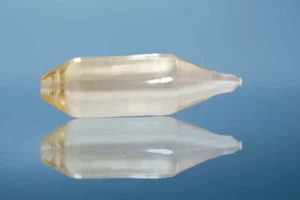Introduction
The world of lasers is vast and complex, with a multitude of types and applications. Among these, the Titanium Sapphire (Ti Sapphire) laser stands out due to its unique properties and wide range of uses. But how does a Ti Sapphire laser work? In this article, we delve into the mechanics of this fascinating technology.
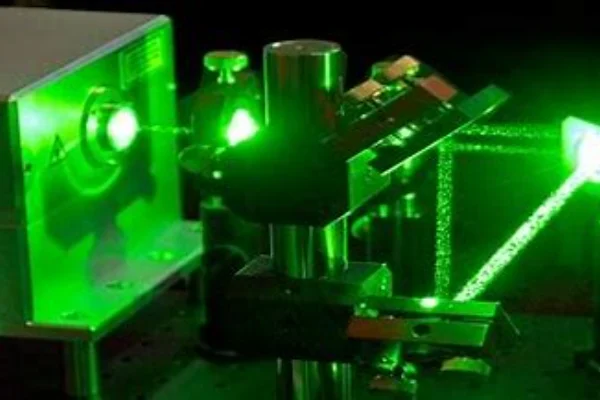
What is a Ti Sapphire Laser?
Before we explore the workings of a Ti Sapphire laser, it’s crucial to understand what it is. A Ti Sapphire laser is a type of tunable laser with a lasing medium made of titanium-doped sapphire crystals. This laser is renowned for its broad tuning range and ultrafast pulse generation, making it a popular choice in various scientific fields.
The Core Components of a Ti Sapphire Laser
The core components of a Ti Sapphire laser are integral to its operation, each playing a pivotal role in the generation of the laser beam. Let’s delve deeper into these components and their functions.
At the heart of the Ti Sapphire laser lies the Ti Sapphire crystal. This isn’t your ordinary crystal. It’s a specially crafted crystal that has been ‘doped’ with titanium ions. The term ‘doping’ here refers to the process of introducing impurities into the crystal intentionally.
In this case, the impurities are titanium ions, which replace some of the aluminium ions in the sapphire crystal lattice. This replacement is done meticulously and in a controlled manner, ensuring that the crystal retains its integrity while gaining the properties of the titanium ions.
These titanium ions are the active ions that produce the laser light. They are the ones that get excited and emit light, which is the fundamental process in the operation of the laser.
Next, we have the pump source. The pump source is the energy supplier in the laser system. It’s the component that provides the energy required to excite the titanium ions in the crystal. This excitation is the first step in the lasing process.
The pump source is typically an argon-ion laser or a frequency-doubled Nd:YAG laser. These types of lasers are chosen because they emit light at a wavelength that the titanium ions can absorb efficiently. When the light from the pump source enters the Ti Sapphire crystal, the titanium ions absorb the energy from the light, causing them to move from their ground state to an excited state. This is the initial spark that sets the lasing process in motion.
The final key component is the resonator. The resonator is essentially a pair of mirrors that are positioned such that they reflect the light back and forth through the crystal. This back-and-forth motion of light is crucial for the amplification of the light. With each pass through the crystal, the light stimulates more and more excited titanium ions to emit light of the same wavelength and phase, a process known as stimulated emission.
Each stimulated emission event amplifies the light, leading to a build-up of intense light within the resonator. One of the mirrors in the resonator is partially transparent. This partial transparency is by design. It allows a small fraction of the light to escape from the resonator. This escaping light forms the output laser beam, which is a highly coherent and monochromatic beam of light.
In conclusion, the Ti Sapphire crystal, the pump source, and the resonator are the three core components of a Ti Sapphire laser. Each component plays a unique and vital role in the operation of the laser. The Ti Sapphire crystal is the heart of the laser, the pump source is the energy supplier, and the resonator is the amplifier and controller of the light. Together, these components work in harmony to produce the laser beam.
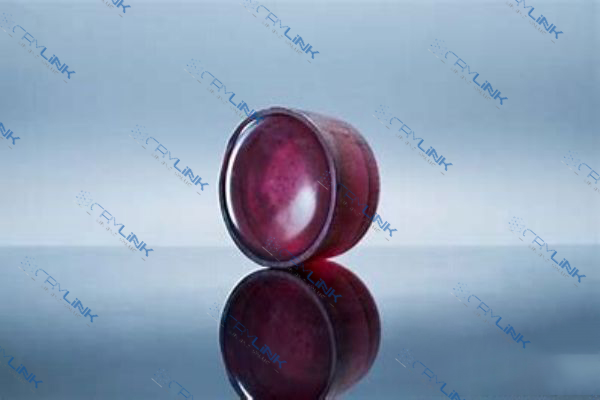
The Working Principle of a Ti Sapphire Laser
The operation of a Ti Sapphire laser is a fascinating dance of physics and engineering, involving a series of steps that contribute to the generation of the laser beam. Let’s delve deeper into this process.
The journey of light in a Ti Sapphire laser begins with energy absorption. The pump source, which we previously identified as an integral component of the laser, directs light into the Ti Sapphire crystal. This light is absorbed by the titanium ions in the crystal.
The absorption of light energy causes the titanium ions to move from a lower energy state, known as the ground state, to an excited, higher energy state. This transition is akin to a person climbing a flight of stairs, with each step representing an increase in energy.
Once in the excited state, the titanium ions are unstable. They have absorbed energy from the pump source, and they are eager to return to their stable ground state. This return to stability happens quickly and results in the release of the excess energy in the form of light.
This light emission is spontaneous, meaning it happens without any external prompting, and it occurs in all directions within the crystal. This is the first instance of light generation within the laser.
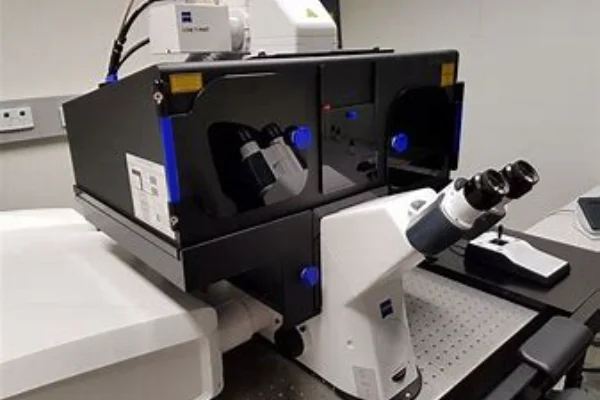
However, the journey of light within the laser doesn’t end with spontaneous emission. As the light bounces back and forth between the resonator mirrors, it passes through the crystal multiple times. This repeated passage through the crystal is a crucial aspect of the laser’s operation.
With each pass, the light can stimulate other excited titanium ions to emit light of the same wavelength and phase, a process known as stimulated emission.
This process is similar to a chain reaction, where the emission of light by one ion triggers the emission of light by another. Each stimulated emission event amplifies the light, leading to a build-up of intense light within the resonator.
The culmination of this process is the output of the laser beam. The resonator, which has been reflecting and amplifying the light, contains a partially transparent mirror. This mirror allows a small fraction of the intense light to escape from the resonator.
This escaping light forms the output laser beam, which is a highly coherent and monochromatic beam of light. This beam is the final product of the Ti Sapphire laser, a testament to the intricate dance of physics and engineering that takes place within the laser.
In essence, the operation of a Ti Sapphire laser is a journey of light, from energy absorption to spontaneous emission, stimulated emission, and finally, the output of the laser beam. Each step in this journey is crucial, contributing to the generation of the laser beam. The Ti Sapphire laser is a marvel of modern technology, harnessing the principles of physics to produce a powerful and versatile tool.

Applications of Ti Sapphire Lasers
The applications of Ti Sapphire lasers are as diverse as they are impressive, thanks to their unique properties. These lasers have carved out a significant place for themselves in various scientific and technological fields.
In the realm of spectroscopy, Ti Sapphire lasers have proven to be invaluable. Spectroscopy is a technique used to study the interaction between matter and electromagnetic radiation. It’s a fundamental tool in the fields of physics, chemistry, and astronomy.
The broad tuning range of Ti Sapphire lasers allows scientists to study a wide array of substances. From analyzing the chemical composition of distant stars to determining the molecular structure of complex organic compounds, these lasers have revolutionized spectroscopy.
Microscopy is another field where Ti Sapphire lasers have made a significant impact. Specifically, in the area of confocal microscopy, which provides a means of obtaining high-resolution images and 3D reconstructions of objects.
The ultrafast pulse generation of Ti Sapphire lasers is particularly beneficial in two-photon excitation microscopy. This technique allows for imaging of living tissue up to a very high depth, without causing damage. It’s a critical tool in biological and medical research.
In the world of ultrafast physics, Ti Sapphire lasers are the workhorses. Ultrafast physics is the study of phenomena that occur on the picosecond (trillionth of a second) and faster timescales. The ultrafast pulse generation of Ti Sapphire lasers allows scientists to study these incredibly fast processes. They have been instrumental in observing chemical reactions in real-time, studying the behavior of atoms and molecules, and even in the development of ultrafast computing.
Beyond these fields, Ti Sapphire lasers are also used in optical communications, laser surgery, and even in the art world for laser cleaning of delicate artifacts. The versatility and unique properties of these lasers make them an indispensable tool in modern science and technology. The applications of Ti Sapphire lasers are a testament to their incredible potential and the exciting advancements they continue to drive in various fields.
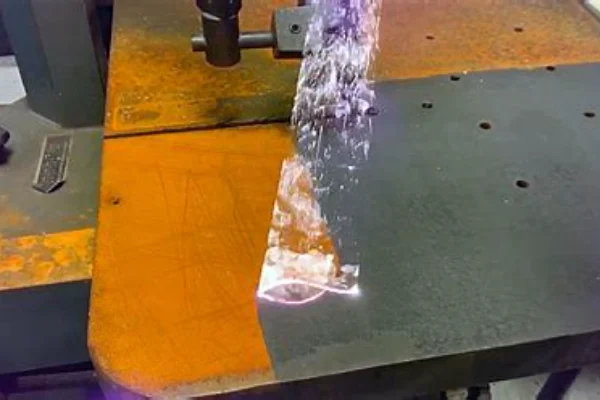
Conclusion
Understanding how a Ti Sapphire laser works involves delving into the intricate processes of energy absorption, spontaneous and stimulated emission, and light amplification. This laser’s unique properties, such as its broad tuning range and ultrafast pulse generation, make it a versatile tool in numerous scientific fields.
FAQs
- 1. What is a Ti Sapphire laser?
- A Ti Sapphire laser is a type of tunable laser that uses a titanium-doped sapphire crystal as its lasing medium.
- 2. What are the main components of a Ti Sapphire laser?
- The main components of a Ti Sapphire laser are the Ti Sapphire crystal, the pump source, and the resonator.
- 3. How does a Ti Sapphire laser generate light?
- A Ti Sapphire laser generates light through a process involving energy absorption, spontaneous emission, stimulated emission, and light amplification.
- 4. What is the role of the resonator in a Ti Sapphire laser?
- The resonator in a Ti Sapphire laser serves to reflect light back and forth through the crystal, amplifying the light with each pass.
- 5. Where are Ti Sapphire lasers used?
- Ti Sapphire lasers are used in various fields, including spectroscopy, microscopy, and ultrafast physics.


